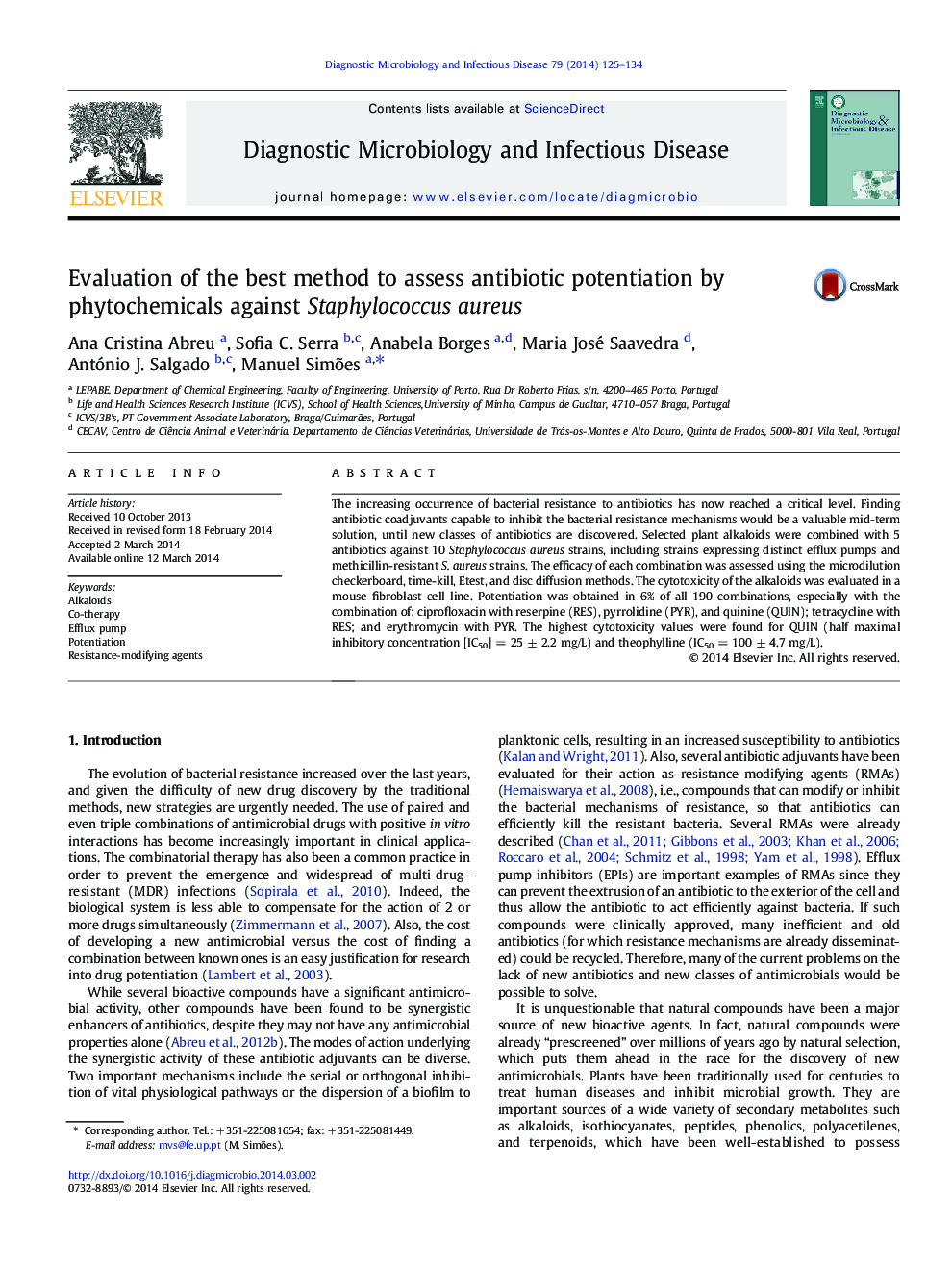| Article ID | Journal | Published Year | Pages | File Type |
|---|---|---|---|---|
| 6115813 | Diagnostic Microbiology and Infectious Disease | 2014 | 10 Pages |
Abstract
The increasing occurrence of bacterial resistance to antibiotics has now reached a critical level. Finding antibiotic coadjuvants capable to inhibit the bacterial resistance mechanisms would be a valuable mid-term solution, until new classes of antibiotics are discovered. Selected plant alkaloids were combined with 5 antibiotics against 10 Staphylococcus aureus strains, including strains expressing distinct efflux pumps and methicillin-resistant S. aureus strains. The efficacy of each combination was assessed using the microdilution checkerboard, time-kill, Etest, and disc diffusion methods. The cytotoxicity of the alkaloids was evaluated in a mouse fibroblast cell line. Potentiation was obtained in 6% of all 190 combinations, especially with the combination of: ciprofloxacin with reserpine (RES), pyrrolidine (PYR), and quinine (QUIN); tetracycline with RES; and erythromycin with PYR. The highest cytotoxicity values were found for QUIN (half maximal inhibitory concentration [IC50] = 25 ± 2.2 mg/L) and theophylline (IC50 = 100 ± 4.7 mg/L).
Keywords
Related Topics
Life Sciences
Immunology and Microbiology
Applied Microbiology and Biotechnology
Authors
Ana Cristina Abreu, Sofia C. Serra, Anabela Borges, Maria José Saavedra, António J. Salgado, Manuel Simões,
